If dangerously overloading small vehicles with way too many passengers and diabolical amounts of luggage were a competitive event, drivers in Burkina Faso would probably win. Or in Guinea. Or maybe Ivory Coast. Notice a theme here? (In case you don’t, the theme is West Africa). In contrast, the big buses (and paved roads) I’ve been riding around East and Southern Africa are mostly pretty comfortable. Safe, even. Sort of.
But then there’s Mozambique, which among all its more orderly neighbours is vaguely reminiscent of the other side of this continent. Chapas (minibuses) are the main culprits: vans with too many rows of seats to start with, and then an extra row crammed in for good measure. This extra extra row is right behind the front seat, facing backward so the passengers in those seats are nose-to-nose with the passengers in the actual first row, limbs woven together in a sort of accordion-effect. Overall the result is something like a crossword-puzzle of sweaty people, with a fold-out seat or a crouching passenger inserted into any gap left by intersecting rows. No matter how full a chapa may look when you flag it down on the side of the road, there is always room to stuff you in, half-standing, hunched over the laps of the people suffocating in the seats underneath you.
Burkina still wins though: I’ve never seen anyone riding on the roof over here.
Overcrowded bus or not, it didn’t really matter – I needed to leave Tofo. I’d had my fill of lazy days at the beach, and started to get restless. In contrast to that, travel days are sometimes hard days, tiring, or even stressful (like when the sun is sinking fast, along with my hopes of arriving in an unknown city before dark). Still, I’m happiest when I’m on the move – or on moving transport at least, bound for someplace new.
So, before the sun was even up one morning, I got on a bus to Maputo. The bus was parked – stuck, you might say – in the sand on the side of the road. After loading it, the driver tied a rope to the front and hauled it onto the road, and then the conductor and some passengers pushed it for a running start. Hours later, another bus hit mine on the way into Maputo and I waited around on the street while the two drivers and a lot of (completely uninvolved) bystanders bickered endlessly. Oyv didn’t bat an eye when I told him about my day later on WhatsApp. It’s not like anything unusual happened.
When I travel in Africa, or anywhere for that matter, a lot of my time goes to exactly that: travel. But this is Africa, after all, and sometimes you might think ‘Yes, that’s a lot of busses and boats and things. But what about all the animals?’.
I haven’t exactly been all over the wildlife-encounters lately. That’s not to say that wildlife hasn’t encountered me. Back in Kenya, for example, a bright green snake fell out of a tree and landed in my hammock with me. I lay very still for a second and then shook it off my leg. Then I started googling ‘deadly snakes in Kenya’ (there are plenty).
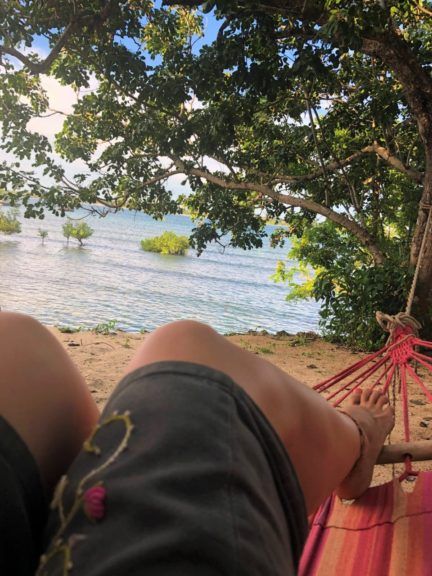
So there’s that…And as I sit writing this in my guesthouse I’m momentarily disturbed by the metallic clang of a shovel striking concrete – the security guard is bludgeoning a poisonous snake to death in the garden outside my window.
On a less reptilian note, there’s also the guesthouse I stayed at where a large family of bushbabies came to the bar every night at 7 pm sharp to eat bananas:
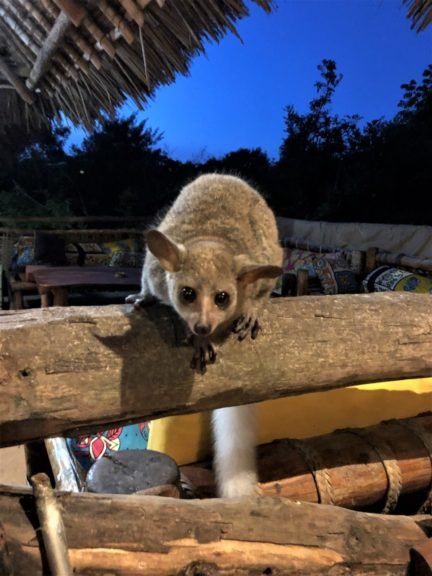
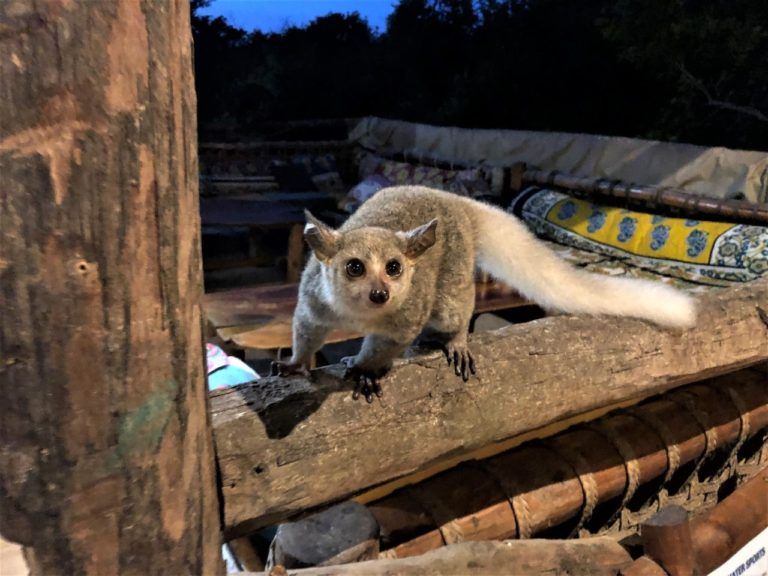
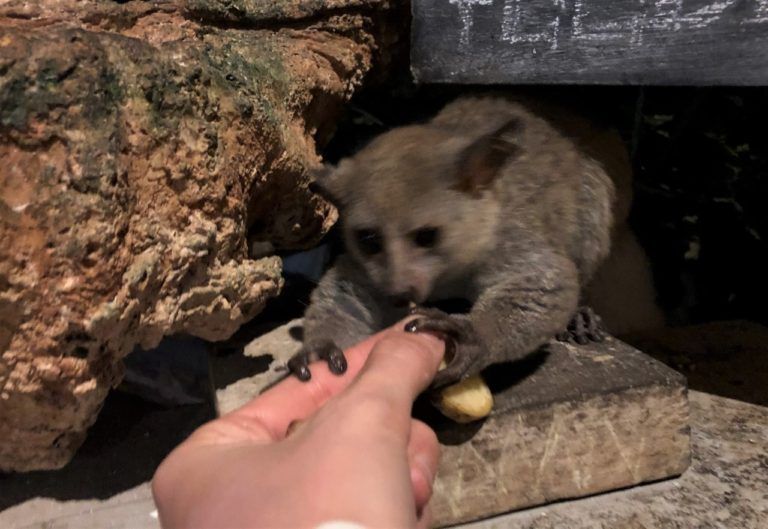
And, I went to a giraffe conservation centre that allows visitors to feed the inhabitants, like a petting zoo with gigantically overgrown goats.
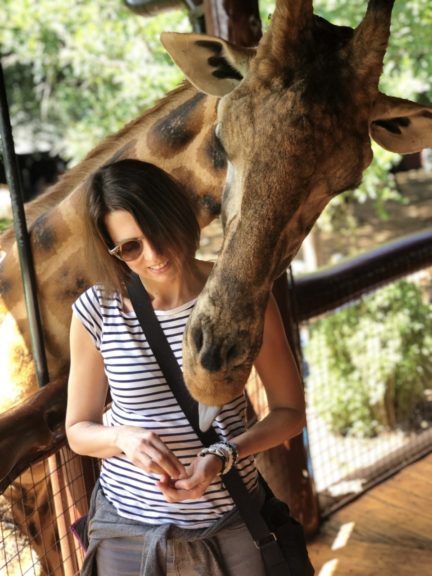
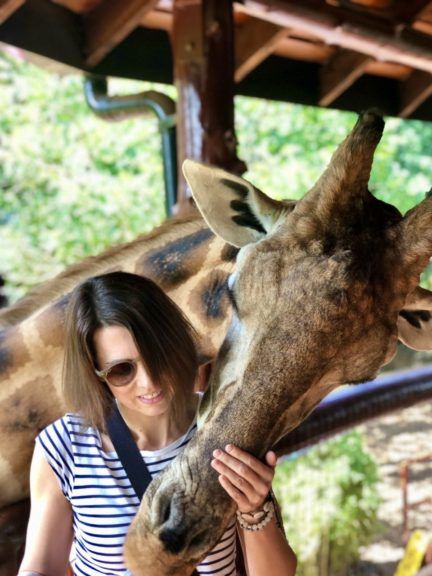
But when you think of African animals, I bet you don’t think about the sort that take kindly to eating pellets and posing for Instagram. Me either, usually, so I thought I should do something about that and get my fix of real animals (not snakes though. I’ve had enough of them).
And so that’s why I went from travelling by overcrowded chapa in Mozambique to safariing with two new friends in a Kia Picanto (proportionally speaking, it is almost the same thing) in South Africa. Maybe we’d all just got used to space-issues, but the three of us saw nothing uncomfortable about stuffing ourselves, our backpacks, and the results of a hunger-fueled minutes-before-closing grocery shopping spree into the little car and heading off into Kruger National Park for a few days.
Overcrowding inside a vehicle is one thing. But in Kruger I discovered it’s also possible to feel overcrowded outside the vehicle too, like when we found ourselves in the midst of a herd of elephants crossing the road. Looking out and up at the massive grey legs like tree trunks just outside the window, I really started to wonder if economy cars are cut out for this sort of thing. Getting back to camp after dark, we had to write an excuse on the camp guard’s clipboard. We came up with ‘Elephant in the road’, pretty much the safari-going equivalent of ‘My dog ate my homework’.
And as for overloading the car with groceries, a baboon solved that problem for us on the second day. There aren’t many places in the park where it is safe to eat. Safe for humans to eat, I mean, without being eaten ourselves, which is why you aren’t allowed getting out of your vehicle anywhere other than at designated picnic sites – which aren’t safe either, as it turns out. I was just about to eat an awesome sandwich (ham, turkey, avo and cheddar, in case you’re wondering) when a baboon suddenly ran out of the bushes and leaped onto the picnic bench right next to us. I say that like it was funny, but even now I’m upset about my sandwich. We jumped up and fell over ourselves and each other trying to get away – that baboon had some serious fangs – and then watched from the sidelines with a dozen monkeys waiting for the scraps. Whatever the baboon didn’t eat, he trashed, and then he ran off taking an unopened bag of Doritos with him, although he did leave our phones and the car keys where we’d dropped them on the table.
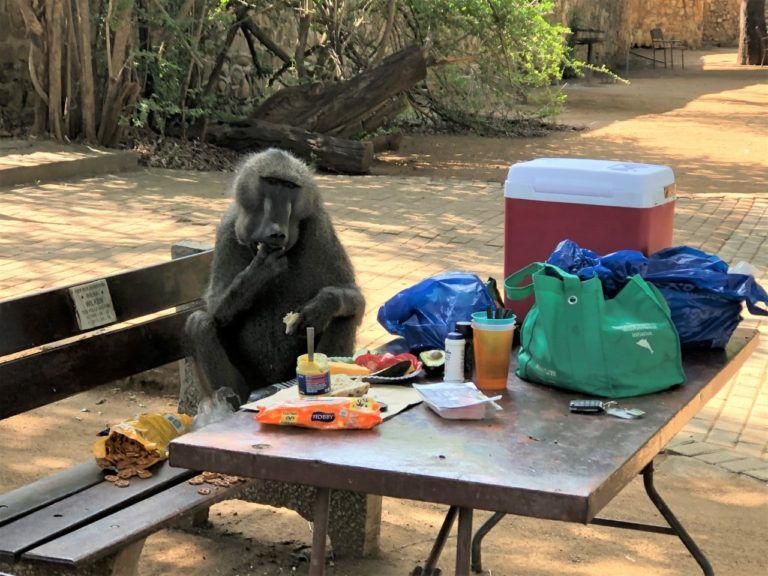
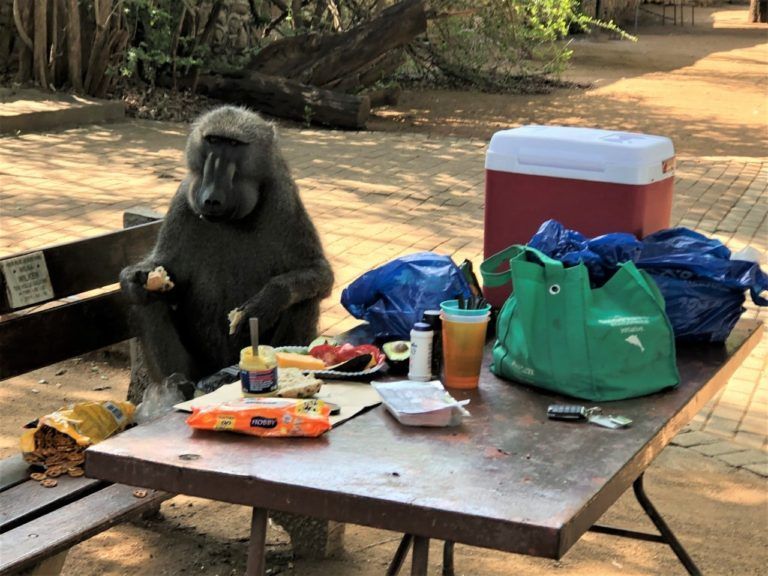
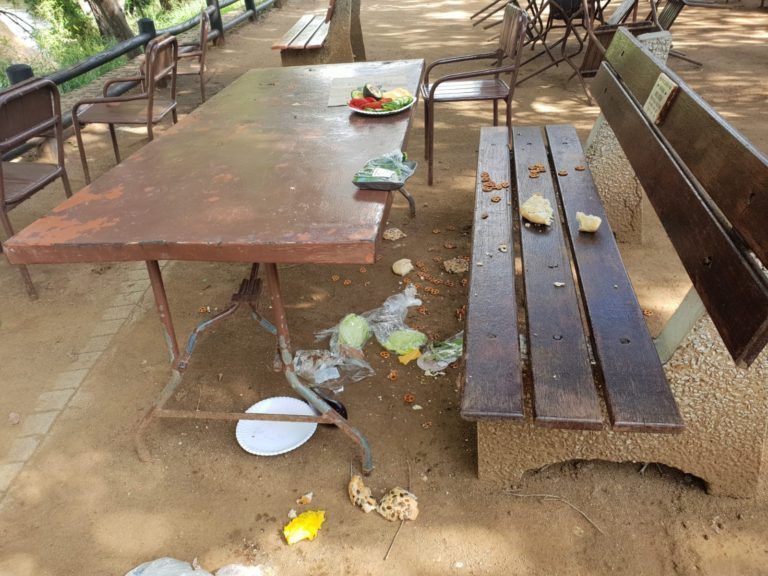
I’m not sure the baboon’s actions were intentional (I’m not sure they weren’t, either), but if so, this wanton destruction backfired on him as we got a free dinner at camp and a night game drive, when we reported the incident. Lesson learned: if you don’t want to overload your car with food before a safari, you can always hang out at picnic sites with a bag of Doritos and see what happens next.
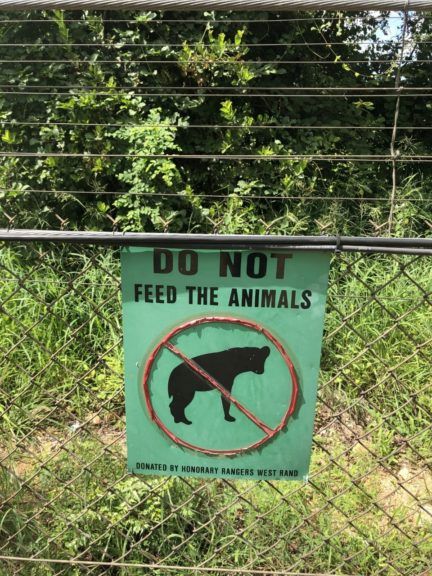
‘We meet again’ I said to the millionth impala that bounded across our path one day. These beautiful, soft-eyed creatures are here in countless numbers (along with their friends, the gazelles) and as numbers go, they’re the main attraction on any safari – or they would be, except that nobody cares about impalas after the third or fourth herd.
But the point was to see animals, after all. And along with the enormous ones that wave their trunks and flap their ears menacingly at your car, and the greedy ones that steal your food, we saw most of the other usual safari-suspects too. Adorably ugly warthogs running fast with tails straight in the air like antennae; baby elephants galore; beautiful, tawny, arrogant lions basking in the sun; and my personal favourites – giraffes. Wild ones, stalking across the road and placidly nibbling on treetops, not feeding from my hand (they’re still quite amenable to photos, though).
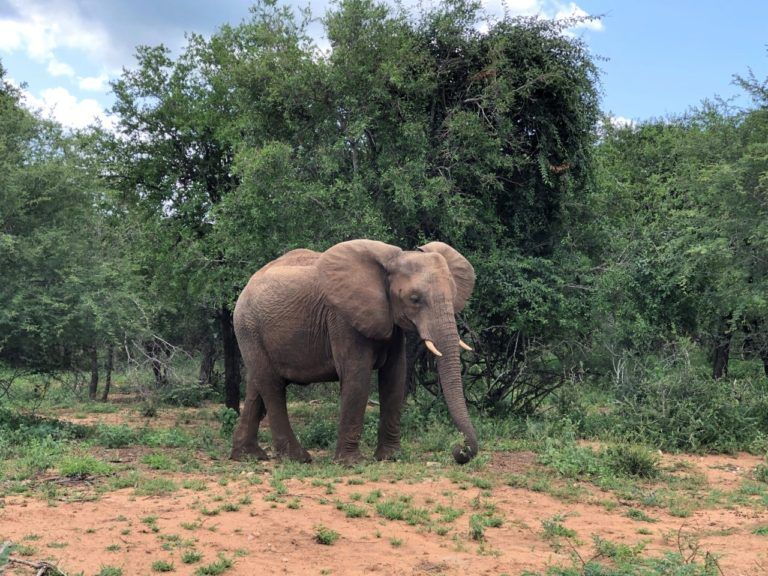
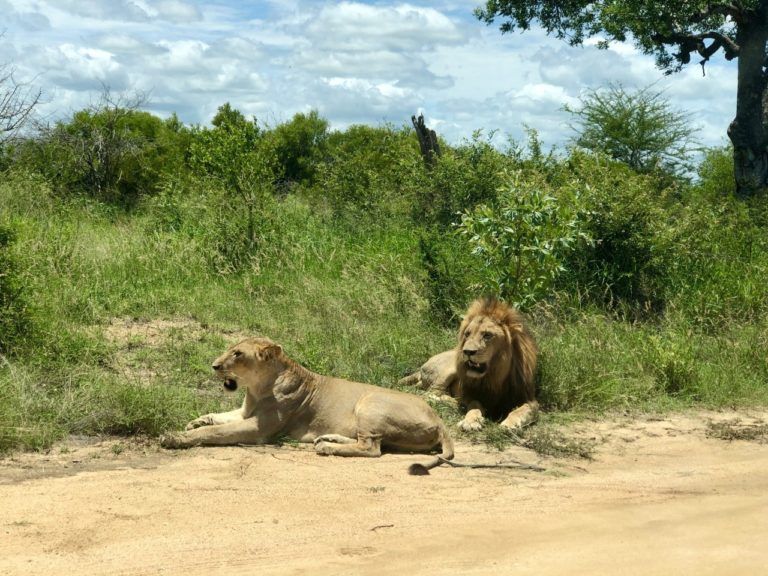
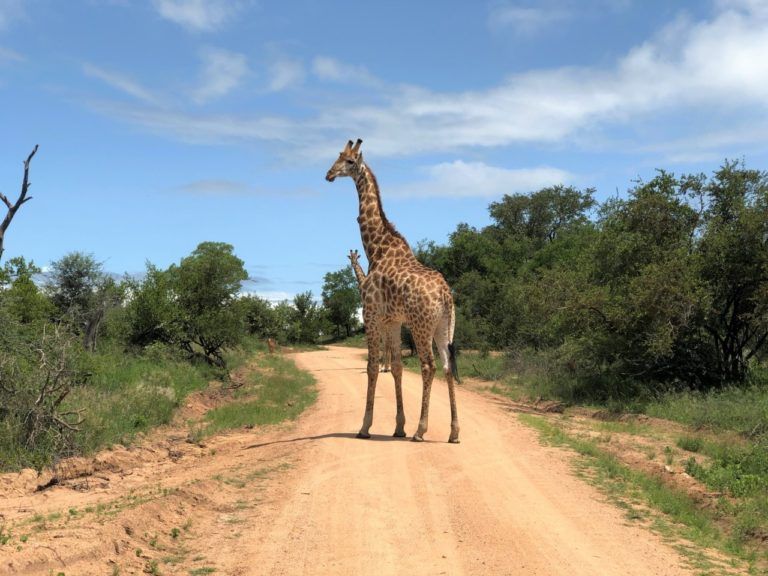
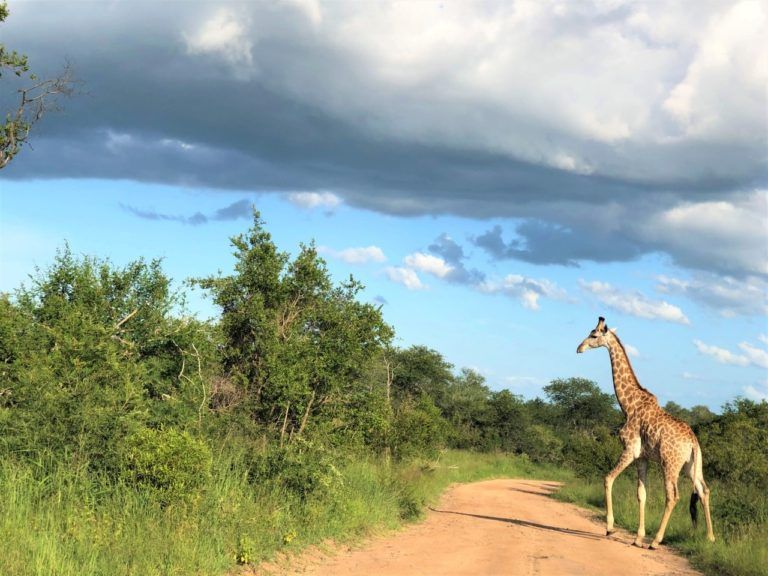
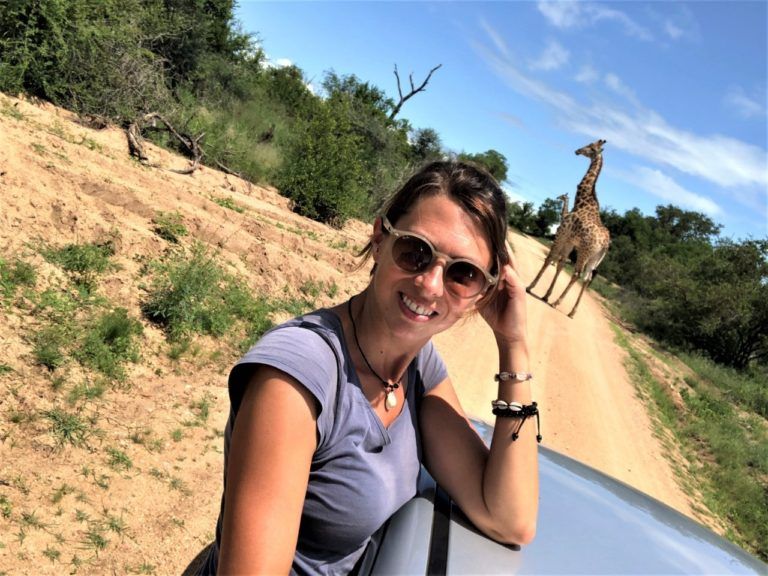
Later on we drove out of the park and stopped in Graskop for the night. The small town looked familiar to me. I recognised a pancake house (it’s always the food, with me) and then I remembered: Oyv and I had been here on our way down to Cape Town – from Cairo – a few years ago. I was tempted to travel onwards by car with my friends, rather than catch another overloaded bus with strangers. But you know, getting there is half the fun and all that, so I stayed behind when they drove on. And sure enough, only another day went by before I was back on the bus, to Johannesburg this time. Nobody was on the roof, of course, so Burkina still wins.
Read more
Check out the rest of my stories from the road, for more of my adventures (and misadventures) in Mozambique and South Africa.




This Post Has 2 Comments
Another excellent report.I followed your exact route from Senegal to Benin.Same g.h.,s.I Crossed all borders in the interior and continued after Benin to Congo Democratic Republic all over land four and half months.Since had printed most of your info showed it at the g.h.,s.Many remembered you guys.
Also did east Africa two years ago Egypt to Namibia. West Africa very few other travellers and more expense with all those visas.
David
Thanks!
That’s amazing – and I’m so glad I could help 😉 How’d you like it? West Africa is definitely a handful sometimes:) A different experience to travelling in the east, I think.
So, after Benin – Nigeria, Cameroon, Congo, DR Congo?